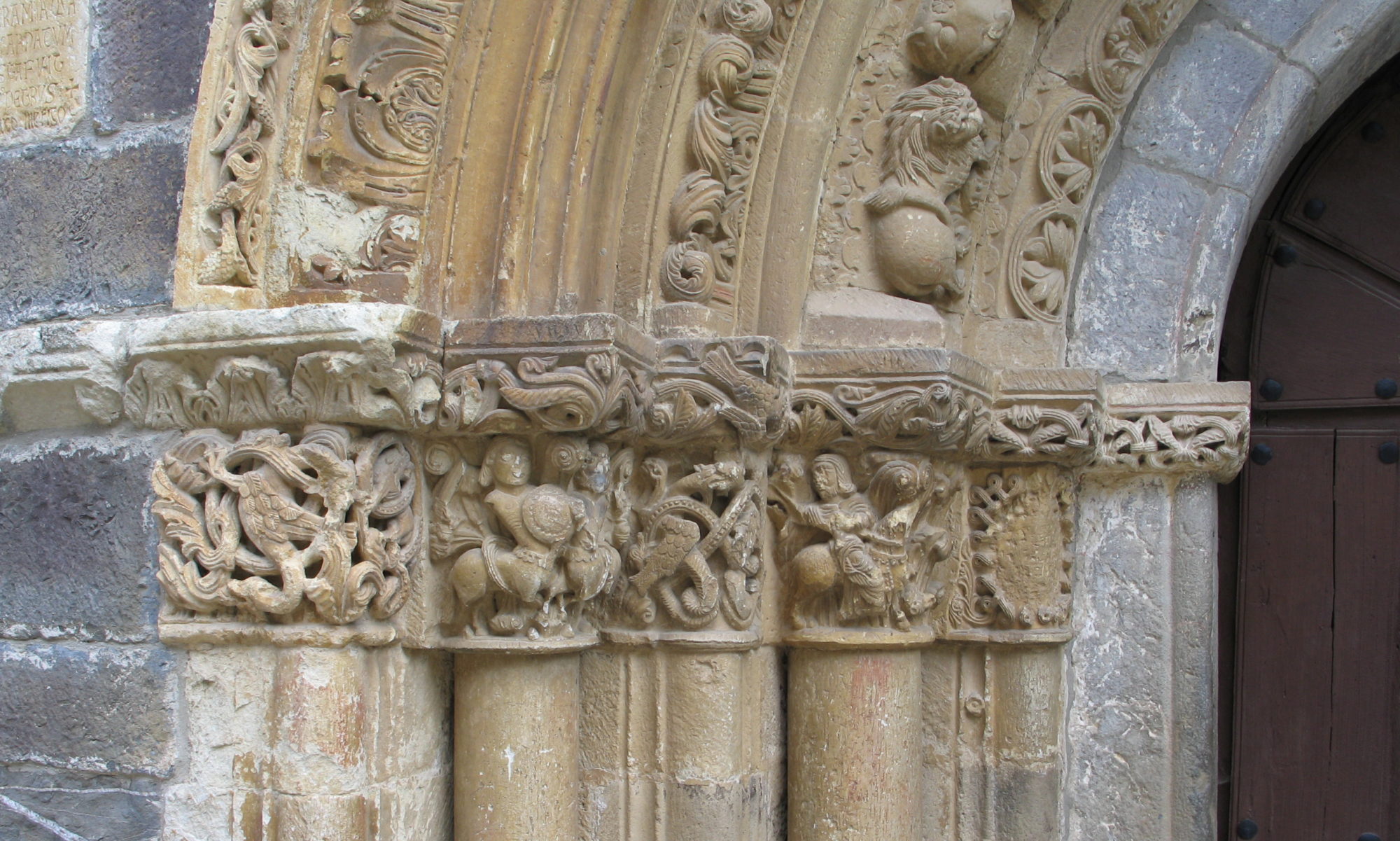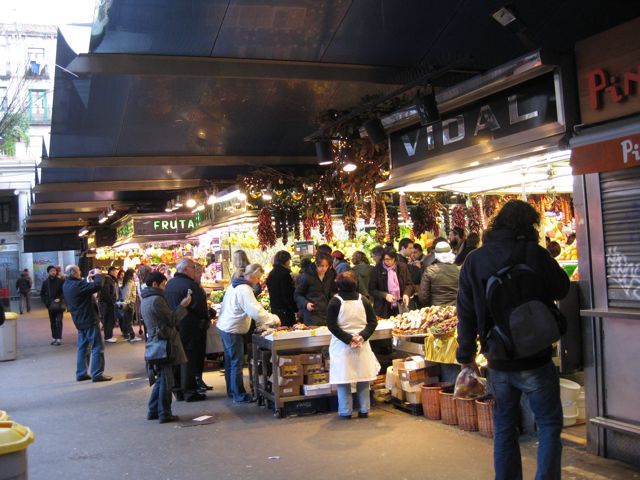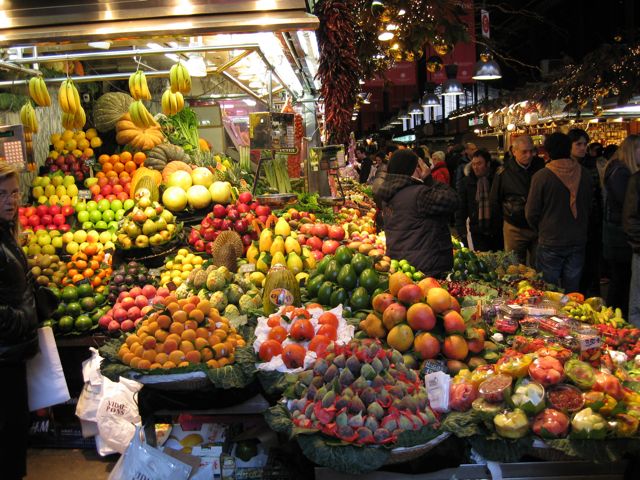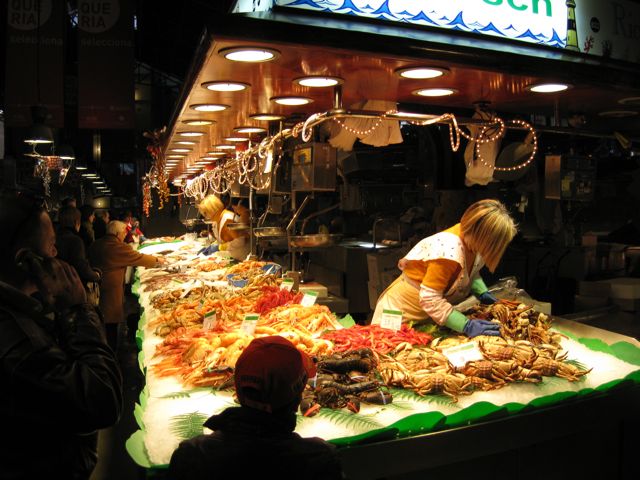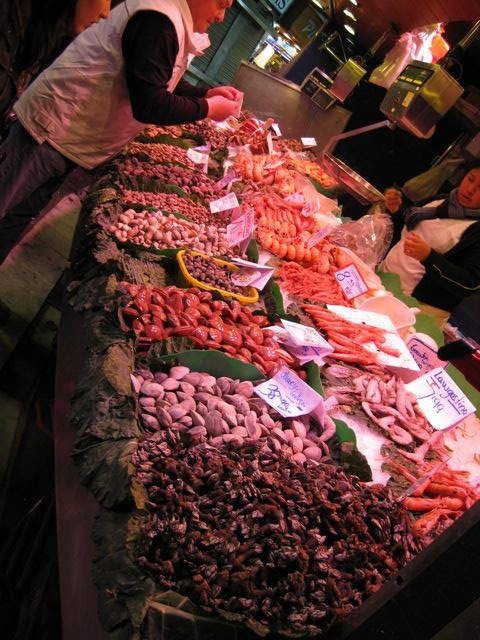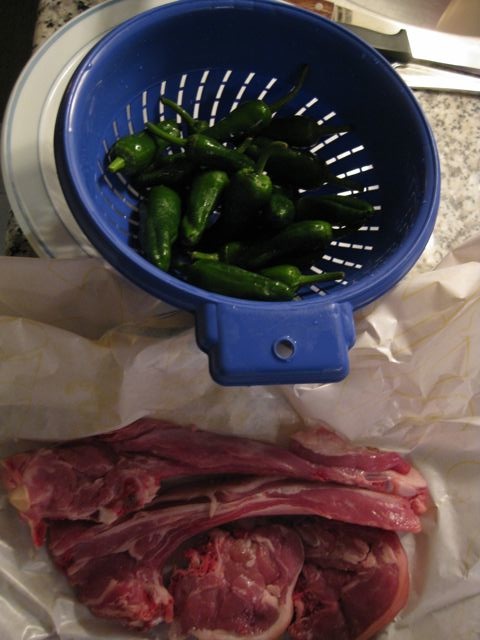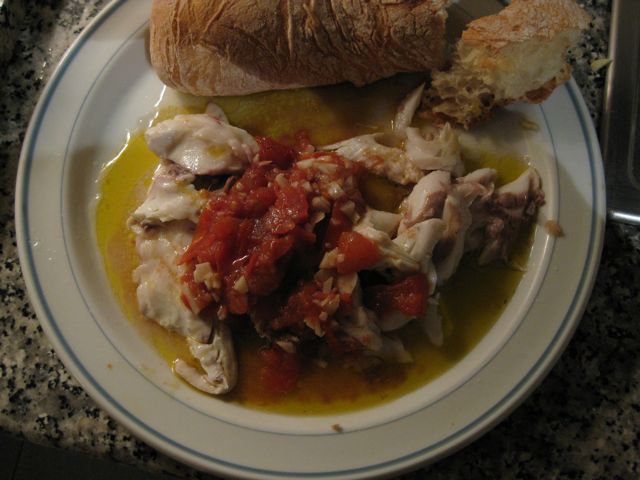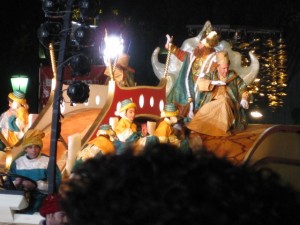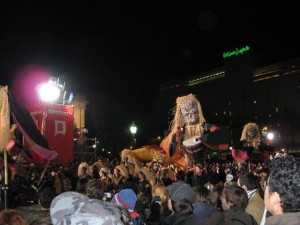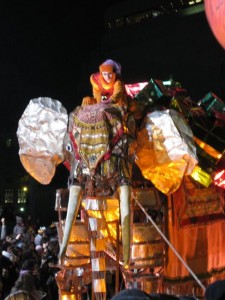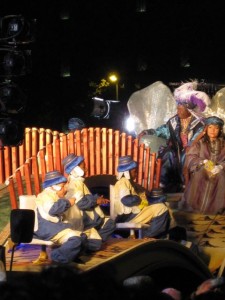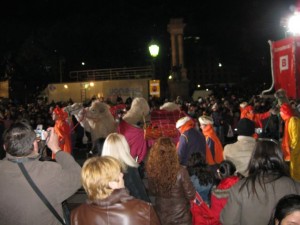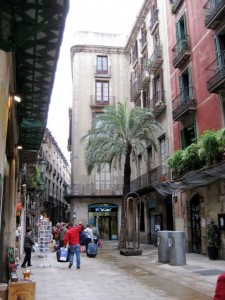I’ve promised a lot of people a food post and I’m sorry it has been delayed, but here it is now. I’m a passionate food tourist — I can even spend an hour or so happily in a perfectly ordinary foreign supermarket — and one of my great griefs on earlier trips to Spain has been that I haven’t had anywhere to cook the wonderful food I see. Well, this time around, I have a tiny kitchen and one of the best markets in Barcelona across the street from me so I am making up for lost time. Check it out:
Can you believe that wonderful fish and shellfish? One of the things that fascinates me is how all the vendors seem to follow rules about what they can sell. Poultry sellers sell game, but not other meat. Fresh pork sellers sell charcuterie (embotits) but not beef. Beef and lamb can be sold together. And offal is all sold at the same few shops.
Here are some raw materials about to be cooked by me:
These are tiny lamb chops and some “pimientos de padron.” These peppers are blistered briefly in oil, salted and eaten. I’d read about them many times, but never eaten them before.
This is a dish I made from a fish and some tomatoes I bought. The fish was a “dorada,” a farmed fish, very cheap, and it was sold like all fish are in this market, not only whole but ungutted. The guts will make a fish spoil faster, so their presene is a sign of freshness. Thank goodness, the nice fish ladies with the big knives will gut and scale them for you.
